As the country continues along its path to reopen society and the economy, we reflect on the findings of our research into the employee wellbeing experience during this difficult year.
Our two reports, Coping with Covid and Coping after Covid, explore how Covid-19 has impacted employee mental health, wellbeing spend and productivity across organisations in England. The results revealed a hidden cost to the pandemic in the form of presenteeism, reduced productivity and changes to wellbeing spend.
These five charts demonstrate some striking ways in which the pandemic has influenced workplace wellbeing, some of which may not be apparent to employers but could affect employees’ readiness to return to work in the post-lockdown world.
Mental health affects productivity more than employers realise
Our Coping with Covid report found that mental health absences increased by 10% in 2020. While this statistic paints a troubling picture of the nation’s wellbeing, the true cost of the pandemic on employee mental health is more difficult to quantify.
On top of absences, there seems to be an increase in presenteeism in the workplace. We asked employees how often their mental health affects their work and found that over a third (36%) felt their productivity is affected at least once a week. With remote working still the norm, managers may be missing the signs that people are struggling, as employees continue to ‘turn up’ to work but their mental health prevents them from performing at their best.
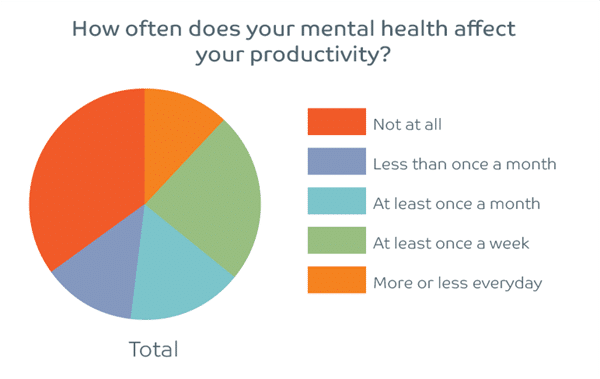
Employees and HR teams are seeing things differently
Our survey found a troubling disconnect between how HR leaders and employees perceive morale, mental health, physical wellbeing and productivity.
Compared to HR leaders, employees took a significantly more pessimistic view across all four areas. When it comes to mental health, over a third of employees (35%) reported organisational wellbeing as ‘not good’ or ‘not good at all’, compared to only 7% of HR leaders.
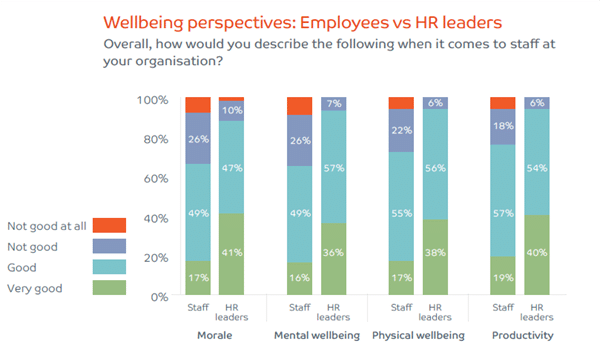
This suggests that the impact of the pandemic is not fully visible to leaders and employees may be struggling in silence. HR teams can bring about positive change in this area by holding open and honest conversations with their people and taking their viewpoints on board. Regular pulse surveys and feedback from 1:1s are a good place to start unpicking the issues that affect employees in their day-to-day working lives.
Wellbeing programmes optimise productivity
Our Coping after Covid report explored the link between wellbeing and productivity in more detail. We asked HR leaders to rate productivity in their organisation and found that organisations with a wellbeing programme outranked those without one. Of those with a wellbeing programme in place, 43% of HR leaders rated productivity as ‘very good’, compared to just 18% of those without one.
This, coupled with the results of various external studies, shows that wellbeing spend is an effective way to increase productivity. With health and wellbeing in the spotlight like never before, workplace wellbeing is an area where business leaders can take control despite on-going change and uncertainty.
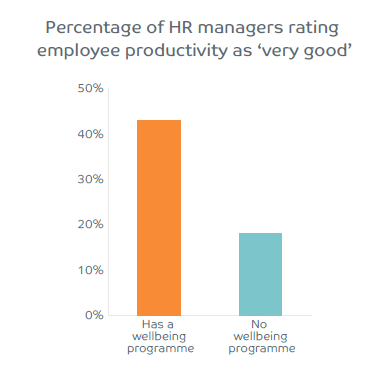
Employees are looking for continued support
As we emerge from lockdown employees face new challenges and require continued support in the workplace. The results varied by sector, but overall trends emerged as well. Over a third (39%) of manufacturing employees feeling that their workplace is still not Covid secure, while more than half (56%) of health and care workers are struggling with their mental health.
Employees across all sectors are seeking long-term changes to the way they work, suggesting that people will be expecting to work more flexibly in the future. With a quarter of employees looking for increased wellbeing support in the coming months, there is a real opportunity for HR teams to increase productivity by providing assistance where it matters most.
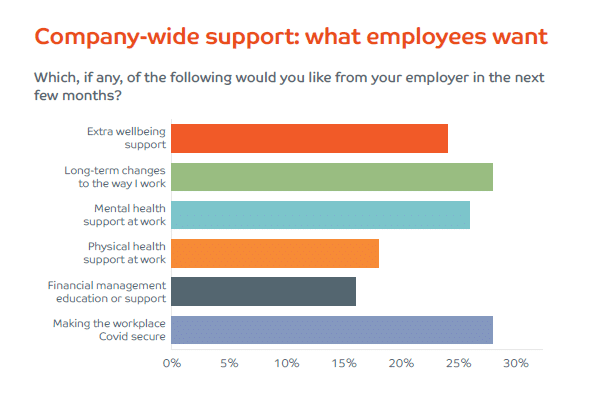
Company culture drives wellbeing spend
While the majority of businesses spent more on wellbeing in 2020, only 36% expect to increase their spend further in 2021. The leading motivation for increased spend was culture change, while commercial drivers such as performance and productivity were correlated with a decrease in planned spend.
With 59% of HR leaders saying they want to do more in terms of wellbeing but company culture prevents it, this increased spend should be a step in the right direction. Unfortunately, with wellbeing and productivity so closely linked, those planning to decrease their spend may find their people struggle to perform at their best in the coming months.
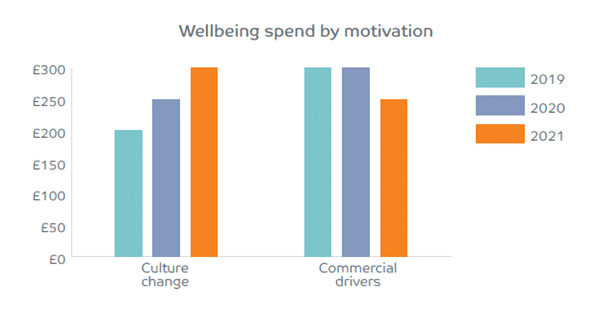
Download the free reports
For a more detailed look at our findings, including further charts and wellbeing advice, download the Coping with Covid and Coping after Covid reports. HR teams can also find useful resources and downloads in our HR Resources section.

